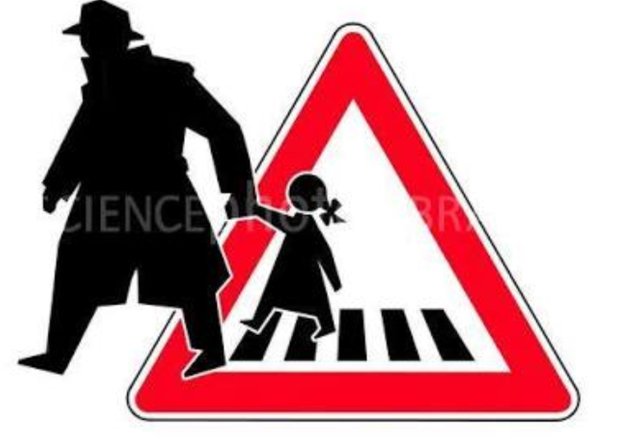
Unfortunately in this day and age so many children go missing....... So many people actually for that matter.
How many kids are kidnapped each year?
There are approximately 1,435 kidnappings each year. This number is an estimate, however, as not every case gets reported, especially as it pertains to family member abductions.
How many kids are kidnapped by family members?
A family abduction is the taking or concealing of a child under the age of 17 against the person’s legal rights. Family members abduct children in 1,230 of the total kidnapping cases.
How many kids are kidnapped by strangers?
A stranger abduction, also known as a non-family abduction, is the result of a stranger taking or luring a child under the age of 17. Of the 1,435 kidnappings per year, 205 were non-family abductions.
In many countries, statistics on missing children are not even available; and, unfortunately, even available statistics may be inaccurate due to: under-reporting/under-recognition; inflation; incorrect database entry of case information; and deletion of records once a case is closed.
Here are some really helpful tips on what to teach your children to prevent a possible abduction:
Teach your children to run away from danger, never towards it. Danger is anyone or anything that invades their personal space. Teach them to yell loudly. Their safety is more important than being polite. Teach your children that if they are ever followed by a car to turn around and run the other direction to you or a trusted adult. If someone grabs them try throw themselves on the floor kick scream move around fight because it is difficult to be picked up when your full weight is on the ground.
Never let your children go places alone, and always supervise your young children or make sure there is a trusted adult present to supervise them if you cannot. Make sure your older children always take a friend when they go somewhere.
At all times know where and who your children are with. Remind children never to take anything or respond in any way if approached by someone they do not know. Teach them to run away as quickly as they can to you or a trusted adult.
Talk openly to your children about safety and encourage them to tell you or a trusted adult if anyone or anything makes them feel frightened, confused, or uncomfortable. Discuss security issues with your children so that they will understand the need for precautions. Advise your older children about steps they can take to help safeguard themselves. Know your children's friends and their families. Pay attention to your children and listen to them. If you do not, there is always someone else who will.
Practice what you teach by creating "what if" scenarios with your children to make sure they understand the safety message and can use it in a real situation.
Consider installing an alarm system in your home with a monitoring feature. Make sure your home is secured with deadbolt locks, and ensure that landscaping around it does not provide places for people to hide. Check other access points, such as gates, and make sure they have been secured. Consider installing exterior lighting around your home. Make sure that your home is fully secured before you go to sleep and items, such as ladders, have been stored inside. Prepare a plan to vacate your home in case of any emergency. This should include but is not limited to a fire. Have a plan if an intruder tries or gets into your home.
Make your children part of securing your home. If you have installed an alarm system, demonstrate it to your children and show them how to make certain that doors and windows are locked. This will not only help calm their fears but will also help make them part of your "safety plan" at home. Have a safe room in the house keep a cell phone in there in emergency lock door and don't come out before a chosen word by family is said.
Have a list of family members who could be contacted in case of an emergency. Designate a family member or close associate who would be able to fill the role of advisor in case of an emergency.
Be alert to and aware of your surroundings. Know the "escape routes" and plan what you would do in different emergencies. Practice "what if" scenarios, so you will be well prepared. Know the location of local hospitals and best routes to reach them. Know how to reach the nearest local law-enforcement agency.
Know your employees and co-workers. Do background screening and reference checks on everyone who works at your home, particularly those individuals who care for your children. Their knowledge of your family is extensive so make sure that you have an equivalent understanding of who they are.
Consider varying your daily routines and habits. Do not take the same routes or go at the same time on your regular errands. If you take your children to school change that route as well.
Take steps to secure personal information about yourself. Consider getting a post office box and a safety deposit box. Have your personal bills sent to your place of work or the post office box. Be discreet about your possessions and familys personal habits and information.
Report any suspicious persons or activities to law enforcement. If you feel that you or your children have been targeted or are being stalked, report this information to law-enforcement authorities immediately. DO NOT WAIT.
Remember that you are your best resource for better safeguarding your family. Do not become complacent about personal security issues.
In a mall, and a child gets kidnapped make sure that the child call on the name of the parent than on mommy or daddy because at that moment anyone can be a mommy or daddy. Make sure that at the age of 5 a child at least knows one cellphone number of a parent or close family member. Teach them self defense mechanisms to the eyes, nose, groin etc.
Prevention is better than cure
We live in horrible times watch your loved ones!
Screenshot_20180825-103926.jpg
Lastly be upstanding and report to nearest police station and get a case no so you can spread the incident on social media for all to see and it cuts out that it is a hoax as it can be verified by authorities.
(some of the information credit to The Pink Ladies and a site called CreditDonkey)
There is another site that I belong to. They have branches everywhere in the globe but I belong to the South African one. It's called A21..... These people do wonders with human trafficking efforts and so many have already been saved due to this organization....

I encourage all to be vigilant at all times and remember..... Never say that this can or will never happen to you...........
Be safe and be alert ⚠
Source
Plagiarism is the copying & pasting of others work without giving credit to the original author or artist. Plagiarized posts are considered spam.
Spam is discouraged by the community, and may result in action from the cheetah bot.
More information and tips on sharing content.
If you believe this comment is in error, please contact us in #disputes on Discord
Downvoting a post can decrease pending rewards and make it less visible. Common reasons:
Submit
Very important advice for all parents these days. Scary that this is the way the world is headed
Downvoting a post can decrease pending rewards and make it less visible. Common reasons:
Submit
As you know.... I take this point of discussion very seriously...... There is no time for beating about the bush when kids (or adults) go missing....... Time and action is of the essence.
Downvoting a post can decrease pending rewards and make it less visible. Common reasons:
Submit
It's a scary thought that people are ok with themselves stealing children to use....in what kind of mind/heart is that ok? A black deep dark pitted heart
Downvoting a post can decrease pending rewards and make it less visible. Common reasons:
Submit